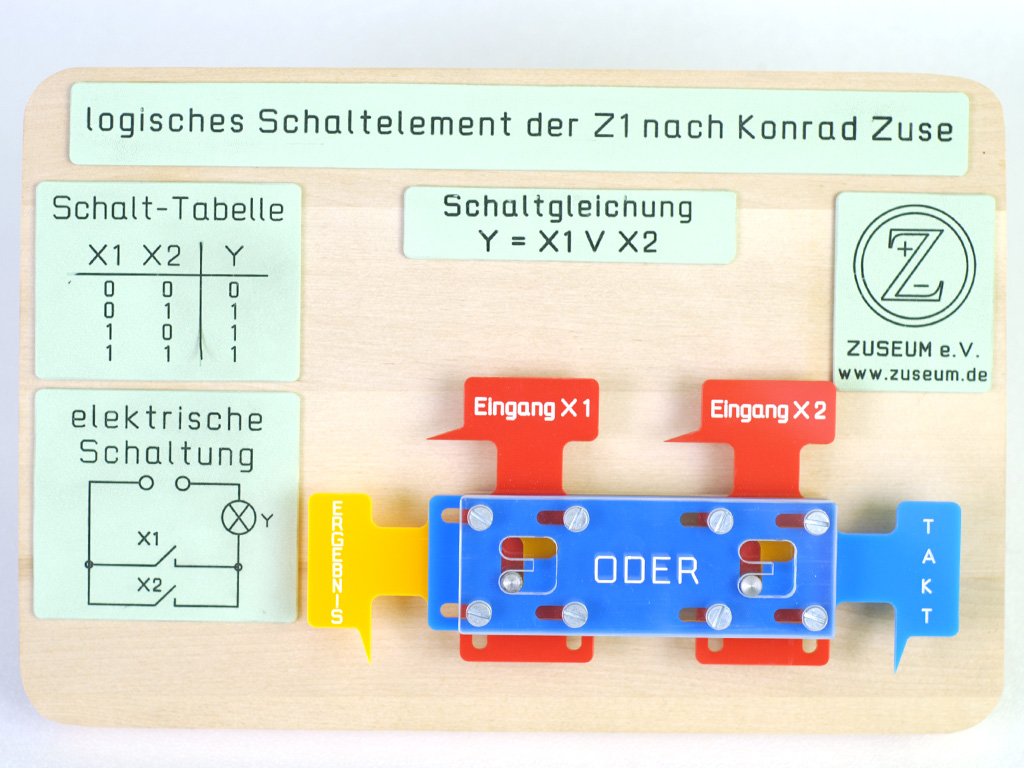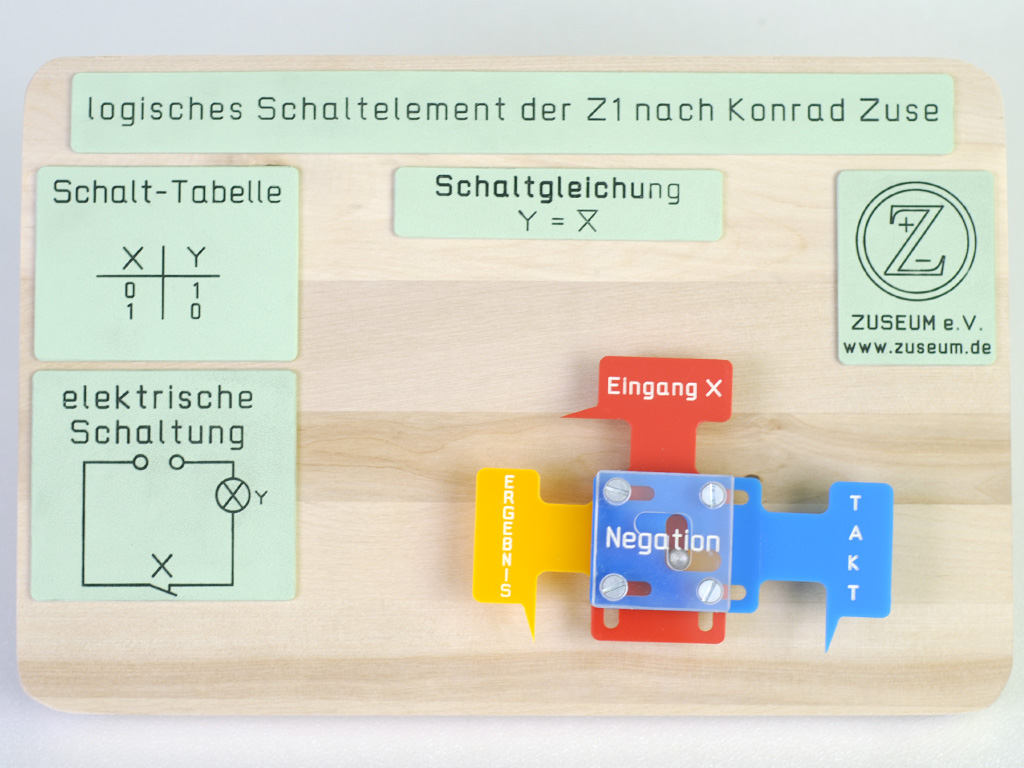Architecture
-

The architecture
of the Z1 only based on mechanical elements. All in all were ca. 30000 scrap metal plates installed in the machine, which were produced by friends, students and his family with the help of saws and arrows.
The Z1 almost included all components of a modern computer, e.g. a controller, free program controller, binary memory, arithmetic unit, clock control and input and output unit with decimals. Only the storage of the program in memory was later developed by John von Neumann.
Keys have realized the input of numbers and the input of the program by using perforated filmstrips, which were read by a tape reader. Several lamps showed the output.
The memory consisted of binary cells, where each cell could take a number. The memory was completely mechanical by using many metal plates and steel pins. Totally 64 numbers of 22 Bit (around 7 decimal digits) can be saved in the memory.
The memory cells were chosen by a selection tool, which determined the memory address depending on the binary coding on the tape.
The controller was responsible for controlling the entire machine. It has pulse and a stroke of about one hertz.
The arithmetic unit consisted of two adders, one for the exponent and one for the mantissa.
The power gets the Z1 by a vacuum cleaner motor.
-

-

-




